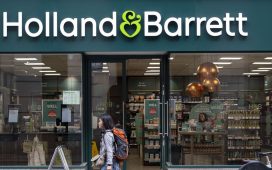What to consider
There’s no denying that when it comes to buying a home, leasehold ownership has a bad reputation.
Whether it is the ongoing cladding scandal, spiralling service charges or a money-grubbing, yet vacant, freeholder or landlord, the prospect of taking on a leasehold property can feel scary.
But for many it is unavoidable. They are more plentiful than freehold ones, and they are generally more affordable. Also, with leasehold, responsibility for the building is shared with the freeholder, which means some of the costs are, too.
The latest figures show that in 2022-23 there were 4.77m leasehold homes in England alone, of which nearly three-quarters were flats, with houses making up the rest.
The Labour government is hoping to do more to shake up the sector, on top of changes introduced by the Leasehold and Freehold Reform Act 2024.
Applying to England and Wales, this act became law shortly before the general election and includes a ban on the sale of new leasehold houses – though most of the reforms are not expected to take effect until 2025-26.
Labour ministers have announced plans to strengthen leaseholders’ rights when it comes to extending their lease, regulate ground rents for existing leaseholders – for example, by possibly bringing in a cap – and restrict the sale of new leasehold flats.
But this planned legislation is in its very early stages and will take some time to come to fruition.
If you are hoping to buy, it is worth checking whether there are any changes to the law that have recently been approved, or are in the pipeline, that may affect you. A good conveyancing solicitor (a must if you are buying a property) will be monitoring that sort of thing.
How long is the lease?
Leasehold is a form of tenancy: it involves purchasing a lease from the freeholder – who owns the property and the ground it sits on – for the right to live in it for however long the lease stipulates.
The length of a lease – which is a written agreement setting out rights and responsibilities – can vary, but it typically ranges from about 99 to 125 years.
“The sweet spot is 125 years,” says Paula Higgins, the chief executive of the campaign group HomeOwners Alliance. “If it’s under 80 years, it can be unmortgageable.”
If you are interested in a property with a shorter-than-average lease, you could ask the seller to extend it for you, Higgins says.
“The onus is on the seller to extend it if they can afford to, or, if they have owned the property for two years, they can put in a notification (a section 42 notice) to the landlord to extend it.”
Otherwise, at present you would have to wait until you have owned the property for at least two years before extending the lease.
Check out lease extension calculators online to help you get a handle on how much the process may cost.
Find out potential costs
Owning a leasehold property invariably involves lots of different costs and requests for payment, so it is vital to be aware of what these are – and what they could escalate to – before agreeing a purchase.
First off is ground rent: a regular payment that a leaseholder makes to the freeholder.
While anyone buying a home on a new, long lease cannot be charged ground rent – this is the result of a ban that took effect in England and Wales in June 2022 – that won’t apply to most people.
“It is a small amount, usually £100 a year, paid to the freeholder,” Higgins says.
What you need to watch out for is how often it increases. “For example, if it doubles every two years, then it can become unmortgageable, so look at the increase over time,” she adds.
You will need to pay a service charge, which usually includes maintenance and repairs, building insurance and management costs.
“I’d advise buyers to look at the last five years of service charges, and see if they have gone up, and how much by,” says Colin Secomb, a specialist property lawyer and joint managing partner at the law firm Lewis Denley.
Also, find out if there is any upcoming work, that falls outside the service charge, that you may have to fork out for.
Ask if there is a sinking fund, which allows the freeholder to collect extra money, on top of service charges, towards infrequent larger projects, such as painting the communal areas.
“If the roof suddenly needs replacing and they haven’t collected any money upfront, it could be expensive for you,” Higgins says.
Secomb also advises prospective leaseholders to try to check who the freeholder and management company are, and to check whether they have a good reputation.
“For example, are they charging extra money for old rope? Often, when there is a third party controlling your building, you have no say. You can find out what they are like by searching online, and also knocking on the doors and asking residents.”
A survey will tell you how well-maintained the property is, but it is also worth visiting the communal areas, such as gardens, lifts and staircases, yourself.
Many leaseholders have, unfortunately, paid the price for unsafe cladding. As well as considering whether the flat is a safe place to live, you need to consider if there is cladding and if there are any likely future costs associated with removing it. A good solicitor should be able to help you here.
Look out for restrictions
The lease will stipulate the details relating to your responsibilities and rights as a leaseholder.
Being a leaseholder generally means there are rules you need to abide by. For example, you may not be able to have a housemate, run a business from the property, or make any structural changes.
It really is worth closely studying the lease yourself as your solicitor may not pick up on points that are important to you – for example, if no carpets or pets are allowed.
Manage or buy a share
It is a good sign if the building is run by “right to manage” (RTM) residents – RTM lets some leasehold property owners take over the management of the building – or a group of leaseholders who have bought the freehold (which you may be able to buy into at a later stage), as they will have more control over the direction of the building, Higgins says.
However, if you are thinking this might be a possibility you would like to pursue, be aware that either option can be difficult to achieve – particularly with large buildings – because more than 50% of leaseholders need to agree to it.
“These could be investors who wouldn’t want to get involved, plus it is more complicated if there are commercial properties, such as shops or offices, in the building,” Higgins says.
Buying a share of freehold, or joining an RTM company, can lead to a lot of administration, which may become a burden.










